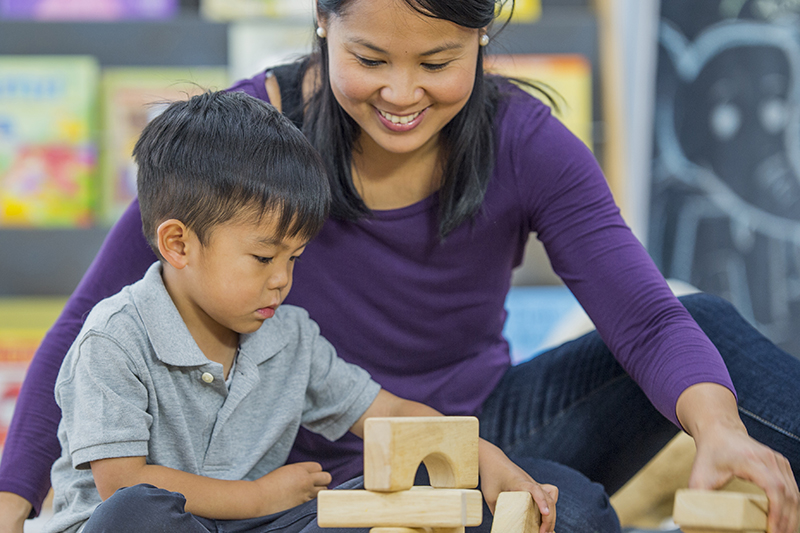Families For Life | Blocks and Builders

Singapore's skyline is one of the world's most beautiful and distinctive. If your child shows an interest in buildings, you can make the most out of his enthusiasm by focusing it on a simple construction project or two. Building a model skyscraper can take hours -- feel free to stretch out the session over the course of several rainy afternoons. If you do, make sure that you have enough space to store your child's work-in-progress.
Pre-activity
Before you get started, take a walk with your child for some inspiration. Stroll along the Helix Bridge or the Esplanade and look back at the skyline. Make the trip an interactive one by asking your child which is his favourite building, and why. Ask him to guess how tall the buildings are. If you have the time, take a ride up one of them to soak up the views from the top -- this lets your child get up close to building features he might miss from the ground, such as roof designs.
You may want to help direct your child's attention by asking him the following questions -- what makes sky scrapers so tall? How are they similar in design? Why do they get narrower as they get taller? Look at a few unusual buildings such as the Marina Bay Sands, and consider how it is different from the others. This is a good exercise to hone in your child's observation skills in comparing and contrasting.
During this pre-activity, take the time to introduce any unfamiliar terms to your child. As always, try to breakdown the concepts into simple terms for your child. And don't forget to take a few pictures so you can talk about it when you head back home. Take the opportunity to visit the library for books on buildings. Now, let's get building!
Activity #1: Skyscraper
All you need for this are lots of cardboard boxes in different sizes, packing/masking tape and markers/crayons. Bonus materials include construction paper, newspaper, magazines, stickers or anything else you can think of that can decorate the skyscraper. Pro tip: If you don't have plain cardboard boxes, simply take any boxes you have and re-assemble them inside out.
To get started, tape the boxes shut. Then help your child stack and arrange the boxes to create a nice, tall building. tape the boxes securely to each other. As you build the skyscraper together, discuss the following:
Stability -- What sort of design makes for a stable skyscraper? Before finalising your skyscraper design, experiment with different methods of stacking the boxes. What happens if you put a smaller box under a much larger one?
Ratios -- How tall is your skyscraper? How wide is it at the bottom? Is it wider than it is tall? Using a ruler or a measuring tape, introduce a few basis math skills by measuring the dimensions of your skyscraper and comparing its measurements.
Once your child has settled on a design, let his imagination run wild. Let him decorate the skyscraper as he likes. Suggest using a marker to draw on a few building features – think windows and doors. Using old magazines and child-safe scissors, he can cut out various pictures or shapes to stick onto the skyscraper.
Activity #2: A newspaper project
Here’s another project that will build on skills and ideas from the first. All you need for this one is plenty of old newspapers and tape, nothing else! Challenge your child to construct the tallest skyscraper he can out of just those two materials. Let him experiment with different ways to create height out of soft, floppy sheets of newspaper.
When you think it’s appropriate (and only if your child doesn’t discover the solution on his own), show him how to roll each sheet of newspaper into a long tube, and then tape the tube securely so it won’t unroll. Voila! A sturdy tube can be combined with other tubes to create a tall building.
Other ways of creating structural strength out of newspaper include folding the paper into bricks or twisting the sheets of paper into long sticks – experiment with what works best for the structure.
Your now-sturdy building materials can be cut to length, taped or glued to each other. Use three or four tubes to create a stable base, just like a camera tripod. Use a few tubes to encircle and stabilise the tripod base. How tall can this skyscraper go?
A note of caution during these activities: Do not let your child climb a stool, stepladder or chair unsupervised to reach the top of the skyscraper. For safety reasons, supervise your child at all times.
Explore more